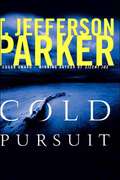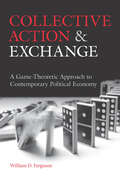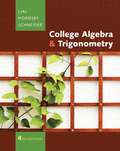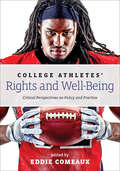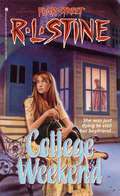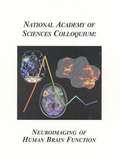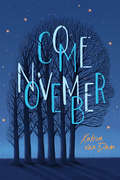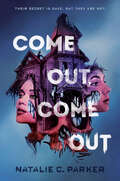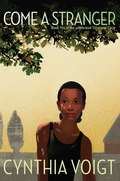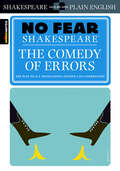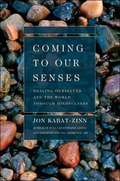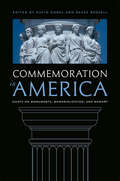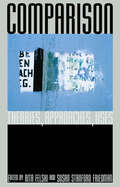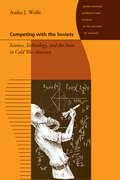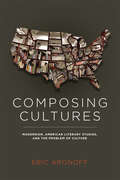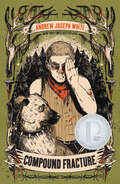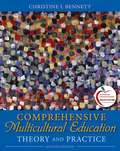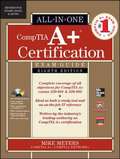- Table View
- List View
Cold Pursuit
by T. Jefferson ParkerFrom the Edgar Award-winning author of Silent Joe, a new hard-hitting thriller of murder, vengeance, and secret passions that will keep readers spellbound.Homicide cop Tom McMichael is on the rotation when an 84-year-old city patriarch named Pete Braga is found bludgeoned to death. Not good news, especially since the Irish McMichaels and the Portuguese Bragas share a violent family history dating back three generations. Years ago Braga shot McMichael's grandfather in a dispute over a paycheck; soon thereafter Braga's son was severely beaten behind a waterfront bar--legend has it that it was an act of revenge by McMichael's father.McMichael must put aside the old family blood feud, and find the truth about Pete Braga's death. Braga's beautiful nurse is a suspect--she says she stepped out for some firewood, but key evidence suggests otherwise. The investigation soon expands to include Braga's business, his family, the Catholic diocese, a multi-million dollar Indian casino, a prostitute, a cop, and, of course, the McMichael family. Cold Pursuit is the novel that T. Jefferson Parker fans have been waiting for.
Collective Action and Exchange: A Game-Theoretic Approach to Contemporary Political Economy
by William D. FergusonIn Collective Action and Exchange: A Game-Theoretic Approach to Contemporary Political Economy, William D. Ferguson presents a comprehensive political economy text aimed at advanced undergraduates in economics and graduate students in the social sciences. The text utilizes collective action as a unifying concept, arguing that collective-action problems lie at the foundation of market success, market failure, economic development, and the motivations for policy. Ferguson draws on information economics, social preference theory, cognition theory, institutional economics, as well as political and policy theory to develop this approach. The text uses classical, evolutionary, and epistemic game theory, along with basic social network analysis, as modeling frameworks. These models effectively bind the ideas presented, generating a coherent theoretic approach to political economy that stresses sometimes overlooked implications.
Collectivization Generation: Oral Histories of a Social Revolution in Uzbekistan
by Marianne KampCollectivization Generation is a history of agricultural collectivization in Soviet Uzbekistan, but it is not focused on Party decisions. Instead, Marianne Kamp offers a history of everyday life that relies on oral history accounts from those she calls the collectivization generation. Born between the early 1900s and the early 1920s, the collectivization generation were rural youth who participated in the transformation of agricultural life in the early 1930s as teens or young adults. A top-down restructuring ruptured their predictable life trajectories and created new categories for understanding self and society. For many, the newly formed kolkhozes became their economic, social, and political milieu throughout their working years, shaping their identities and their material lives. In Collectivization Generation, we meet Uzbeks who were driven from their homes by bandits, whose fathers disappeared in the Stalinist gulag, who suffered starvation and orphanhood. We also meet Uzbeks who told of embracing the project of collectivization, of feeling rewarded with dignity, recognition, pay, association with national triumphs, and with the progress represented by a tractor.
College Algebra and Trigonometry Fourth Edition
by Margaret L. Lial John Hornsby David I. SchneiderThe fourth edition of this college text includes new and updated examples and exercises. It is a comprehensive guide to algebra and trigonometry, with an emphasis on skills development and real-world applications.
College Athletes’ Rights and Well-Being: Critical Perspectives on Policy and Practice
by Eddie ComeauxAddressing major policy issues and athletes’ well-being in collegiate sports.College athletes are at the very center of emerging campus debates over their legal, financial, and academic role. Amid ongoing litigation and pressure from internal and external stakeholders, many policy makers and university leaders are scrambling to determine the nature of this role. This timely and comprehensive volume identifies and discusses bylaws and legal decisions that have impacted the college athlete’s ability to pursue higher education. It also explains and critiques the formal policies of the National Collegiate Athletic Association and member institutions while examining critical issues relevant to the growing fields of sport management, athletic administration, and sports law. Aimed at anyone seeking to enhance their understanding of the intercollegiate athletics landscape, College Athletes’ Rights and Well-Being is divided into four sections. The first lays out the historical foundations that have shaped the intercollegiate athletic experience. Subsequent sections describe the principles, structures, and conditions that influence how athletes experience campus life, as well as the increasingly commercialized business enterprise of college sports. Told from the perspective of athletes and written by leading scholars and researchers, the book’s sixteen chapters are enhanced with useful lists of key terms and conversation-provoking discussion questions. Touching on everything from concussion protocols and collective bargaining to amateurism, Title IX’s gender-separate allowance, and conference realignment, this important book is designed for upper-level undergraduate and graduate students, scholars, educators, practitioners, policy makers, athletic administrators, and advocates of college athletes.
College Success
by Bruce Beiderwell Linda Tse Thomas J. Lochhaas Nicholas B. DekanterCollege Success takes a fresh look at what it means, in today's world, with today's students, to be successful in college. Although many of the topics included--from study skills to personal health, from test-taking to managing time and money--will look familiar to those who have used student success texts that have been around for many editions, College Success takes a new approach. The focus is on realistic, practical tools for the students who need them. This is a book designed, frankly, for students who may have difficulty with traditional college texts. The style is direct and to the point. Information is presented concisely and as simply as possible. This is not a weighty tome that discusses student success--this is a manual for doing it. College student demographics have changed considerably in recent decades. More than a third of all students enroll not directly from high school but after a delay of some years. More students are working and have families. More students come from varied ethnic and cultural backgrounds. More students are the first in their family to attend college. More students have grown up with electronic media and now read and think in ways different from the previous generation. With these and so many other cultural changes, more students are not well prepared for a college education with the study skills and life skills they need to become successful students. For each student to get the most out of College Success and their college experience they must understand who they are as it relates to college. To that end, in every chapter students explore themselves, because success starts with recognizing your own strengths and weaknesses. Students make their own goals based on this self-assessment, determining what success in college really means for them as individuals. Interactive activities then help students learn the choices available to them and the possibilities for improving their skills. Skills are presented in step-by-step processes, tips for success in manageable highlighted displays. Most important, students always see the value of what they are reading--and how they can begin to apply it immediately in their own lives. College Success is intended for use in Freshmen Orientation, Study Skills or Student Success courses. A 2009 study revealed that currently nationwide, 34% of college freshmen do not return to their college for their sophomore year. This book is designed to help change that.
College Weekend (Fear Street Superchillers #32)
by R.L. StineNothing can ruin Tina River’s big weekend at Patterson College with her boyfriend, Josh. She’s so excited, she doesn’t even mind that her cousin, Holly, will be tagging along. But when Tina and Holly arrive, Josh is gone. His roommate, Christopher, says Josh is stuck in the mountains, delayed by car trouble. That’s weird—Josh never mentioned he was going away. It gets even weirder when Holly suddenly disappears. But Christopher isn’t worried about Holly or Josh. In fact, Christopher seems to have the answer to everything. Tina isn’t sure what’s going on, but one thing is clear: she’s about to learn more about love and murder than she ever wanted to know.
Collegiate Republic: Cultivating an Ideal Society in Early America (Jeffersonian America)
by Margaret SumnerCollegiate Republic offers a compellingly different view of the first generation of college communities founded after the American Revolution. Such histories have usually taken the form of the institutional tale, charting the growth of a single institution and the male minds within it. Focusing on the published and private writings of the families who founded and ran new colleges in antebellum America--including Bowdoin College, Washington College (later Washington and Lee), and Franklin College in Georgia--Margaret Sumner argues that these institutions not only trained white male elites for professions and leadership positions but also were part of a wider interregional network of social laboratories for the new nation. Colleges, and the educational enterprise flourishing around them, provided crucial cultural construction sites where early Americans explored organizing elements of gender, race, and class as they attempted to shape a model society and citizenry fit for a new republic.Within this experimental world, a diverse group of inhabitants--men and women, white and "colored," free and unfree--debated, defined, and promoted social and intellectual standards that were adopted by many living in an expanding nation in need of organizing principles. Priding themselves on the enlightened and purified state of their small communities, the leaders of this world regularly promoted their own minds, behaviors, and communities as authoritative templates for national emulation. Tracking these key figures as they circulate through college structures, professorial parlors, female academies, Liberian settlements, legislative halls, and main streets, achieving some of their cultural goals and failing at many others, Sumner's book shows formative American educational principles in action, tracing the interplay between the construction and dissemination of early national knowledge and the creation of cultural standards and social conventions.
Colloquium On Neuroimaging Of Human Brain Function
by Frank Rosler Charan Ranganath Brigitte Roder Rainer KluweThe National Academies Press (NAP)--publisher for the National Academies--publishes more than 200 books a year offering the most authoritative views, definitive information, and groundbreaking recommendations on a wide range of topics in science, engineering, and health. Our books are unique in that they are authored by the nation's leading experts in every scientific field.
Come Home to My Heart
by Riley RedgateGorgeous in its sincerity and its precision—in its raw, honest depiction of what it feels like to be a gay teen in a world that says that you don&’t deserve a home.Gloria Forman and Xia Harper go to the same high school in a small South Carolina town, but they couldn&’t be more different. While Gloria is part of the popular, Christian crowd, Xia sleeps through class, antagonizes anyone who dares talk to her, and buries herself in books that help her pretend she&’s somewhere else—anywhere that being lesbian wouldn&’t be a waking nightmare. When the two form an accidental friendship, they begin noticing each other in ways they promised themselves they'd avoid. After all, Xia&’s isolation is self-imposed for a reason, and the last thing Gloria needs is more upheaval, especially after her parents kicked her out of the house for being gay. Ever since, she has spent her nights under the stage in the school auditorium and her days terrified of being discovered. Xia just wants to keep her head down until the end of senior year. Gloria just wants to keep her living situation quiet until her parents come around. But as their feelings for each other intensify and the truths they've hidden work their way to the surface, what they truly want will change forever.
Come November
by Katrin van DamThis refreshingly original, contemporary YA debut centers on Rooney, a teen girl struggling to hold her family together in the face of her mother's delusions.It's not the end of the world, but for Rooney Harris it's starting to feel that way. It's the beginning of senior year, and her mom just lost her job. Even worse, she isn't planning to get another one. Instead, she's spending every waking moment with a group called the Next World Society, whose members are convinced they'll be leaving Earth behind on November 17. It sounds crazy to Rooney, but to her mother and younger brother it sounds like salvation. As her mom's obsession threatens to tear their lives apart, Rooney is scrambling to hold it all together. But will saving her family mean sacrificing her dreams -- or theirs?
Come Out, Come Out
by Natalie C. ParkerA spine-tingling LGBTQIA+ YA horror about queer teens who accidentally invoke a twisted spirit who promises help but delivers something sinister.Perfect for fans of Kayla Cottingham, Andrew Joseph White, and Ryan La Sala."A searing and poignant portrait of queer identity wrapped in an unflinching tale of terror." —Kalynn Bayron, New York Times bestselling author of You&’re Not Supposed to Die Tonight"Modern horror at its best." —Bram Stoker Award Nominee Sarah HenningIt's never been safe for Fern, Jaq, or Mallory to come out to their families. As kids their emerging identities drove them into friendship but also forced them into the woods to hide in an old, abandoned house when they needed safety. But one night when the girls sought refuge, Mallory never made it back home. Fern and Jaq did, but neither survivor remembered what happened or the secrets they were so desperate to keep. Five years later, Fern and Jaq are seniors on the verge of graduation, seemingly happy in their straight, cisgender lives—until a spirit who looks like Mallory begins to appear, seeking revenge for her death, and the part Fern and Jaq played in it. As they&’re haunted, something begins to shift inside them. They remember who they are. Who they want to love. And the truth about the vicious secrets hiding in their woods. This delightfully dark and pointed novel calls out the systems that erase gay and queer and trans identity, giving space to embrace queerness and to unleash the power of friendship and found family against the real monsters in the world.
Come a Stranger (The Tillerman Cycle #5)
by Cynthia VoigtA dashed dream leads to a rash decision in the fifth installment of Cynthia Voigt’s Tillerman cycle.Mina Smiths lives to dance, so her scholarship to ballet camp seems like a dream come true. She doesn&’t even mind being the only black girl in the troupe—that is, until she is told she&’ll never be a classical dancer. It&’s then that Mina begins to face some difficult truths about race and identity and transfers her passion for dance to Tamer Shipp, the summer minister for her church. The problem is, he&’s a grown man with a family, but she can&’t stop wishing for more to their friendship than simply pastor and parishioner. Cynthia Voigt&’s incomparable mastery of character and community shines forth in this stirring novel from her acclaimed Tillerman cycle.
Comedy of Errors: No Fear Shakespeare Side-by-Side Plain English (No Fear Shakespeare)
by William Shakespeare SparkNotesThis No Fear Shakespeare ebook gives you the complete text of The Comedy of Errorsand an easy-to-understand translation.Each No Fear Shakespeare containsThe complete text of the original playA line-by-line translation that puts Shakespeare into everyday languageA complete list of characters with descriptionsPlenty of helpful commentary
Coming to Our Senses: Healing Ourselves and the World Through Mindfulness
by Jon Kabat-ZinnFrom the bestselling author and renowned mindfulness teacher, scientist, and educator . . . a guide to living a meaningful life.This follow-up to the widely praised national bestseller Wherever You Go, There You Are is yet another revolutionary offering from Jon Kabat-Zinn, showing readers how the power of mindfulness can bring radical change to their lives.In the national bestseller Wherever You Go, There You Are, Jon Kabat-Zinn struck a chord in contemporary society that continues to reverberate to this day. It has been embraced by politicians, business leaders, and celebrities and endures as a classic with readers. In his groundbreaking new book, Dr. Kabat-Zinn teaches us how to harness the power of mindfulness to effect profound change in our personal lives and in the world.As stress continues to exact a toll on everyday life, people are increasingly turning to ancient, meditative methods, which have been tested by science, to relieve the ill effects and become more focused, healthy, and proactive. Kabat-Zinn has been for decades at the forefront of this mind/body movement and the revolution in medicine and health care it has spawned, demystifying it and bringing it into the mainstream. In Coming to Our Senses, he shares how every human has the capacity to mobilize deep, innate resources for continual learning, growing, healing, and transformation through mindfulness.Woven into eight parts, Coming to Our Senses uses anecdotes and stories from Kabat-Zinn's own life experiences and work in his clinic to illustrate healing possibilities. At its core, the book offers remarkable insight into how to use the five senses--touch, hearing, sight, taste, and smell, plus awareness itself--as a path to a healthier, saner, and more meaningful life.This is the definitive book for our time on the connection between mindfulness, health, and our physical and spiritual well-being.
Commemoration in America: Essays on Monuments, Memorialization, and Memory
by Daves Rossell David GobelCommemoration lies at the poetic, historiographic, and social heart of human community. It is how societies define themselves and is central to the institution of the city. Addressing the complex ways that monuments in the United States have been imagined, created, and perceived from the colonial period to the present, Commemoration in America is a wide-ranging volume that focuses on the role of remembrance and memorialization in American urban life. The volume’s contributors are drawn from a spectrum of disciplines—social and urban history, urban planning, architecture, art history, preservation, and architectural history—and take a broad view of commemoration. In addition to the making of traditional monuments, the essays explore such commemorative acts as building preservation, biography, portraiture, ritual performance, street naming, and the planting of trees.Providing an overview of American memorialization and the impulses behind it, Commemoration in America emphasizes a universal tendency for individuals and groups to use monuments to define their contemporary social identity and to construct historical narratives. The volume shows that while commemorative acts and objects affect the community in fundamental ways, their meaning is always multivalent and conflicted, attesting to both triumphs and tragedies. Constituting a vital part of both individual and national identity, commemoration’s contradictions strike at the core of American identity and speak to the importance of remembrance in the construction of our diverse national cultural landscape.Contributors: Jhennifer A. Amundson, Judson University * Catherine W. Bishir, North Carolina State University Libraries * Thomas J. Campanella, University of North Carolina at Chapel Hill * Glenn T. Eskew, Georgia State University * Glenn Forley, Parsons / The New School for Design * Sally Greene, University of North Carolina at Chapel Hill * Alison K. Hoagland, Michigan Technological University * Lynne Horiuchi, University of California, Berkeley * Ellen M. Litwicki, SUNY Fredonia * David Lowenthal, University College London * Mark A. Peterson, University of California, Berkeley * Richard M. Sommer, University of Toronto * Dell Upton, University of California, Los Angeles
Common Ground: Second Language Acquisition Theory Goes to the Classroom
by Florencia G. Henshaw Maris D. Hawkins&“Common Ground is accessible to teachers at all levels yet firmly rooted in current questions of second language acquisition (SLA). One of its primary strengths is the authors themselves, both of whom are accomplished language teachers who understand the challenges and opportunities in communication-focused language teaching. Their experience, expertise, insight, and enthusiasm for language teaching translate into a book that is refreshingly practical for teachers, especially teachers who are striving to break from traditional drills commonly presented in textbooks. I hope this book finds its way into the hands of every language teacher who is looking for concrete examples of how SLA principles meet the realities of the classroom."—Stacey Margarita Johnson, Vanderbilt University
Comparison: Theories, Approaches, Uses
by Rita Felski & Susan Stanford FriedmanAn extended volume of New Literary History that considers the practice of comparison in literary studies and other disciplines within the humanities.Writing and teaching across cultures and disciplines makes the act of comparison inevitable. Comparative theory and methods of comparative literature and cultural anthropology have permeated the humanities as they engage more centrally with the cultural flows and circulation of past and present globalization. How do scholars make ethically and politically responsible comparisons without assuming that their own values and norms are the standard by which other cultures should be measured? Comparison expands upon a special issue of the journal New Literary History, which analyzed theories and methodologies of comparison. Six new essays from senior scholars of transnational and postcolonial studies complement the original ten pieces. The work of Gayatri Chakravorty Spivak, Ella Shohat, Robert Stam, R. Radhakrishnan, Bruce Robbins, Ania Loomba, Haun Saussy, Linda Gordon, Walter D. Mignolo, Shu-mei Shih, and Pheng Cheah are included with contributions by anthropologists Caroline B. Brettell and Richard Handler. Historical periods discussed range from the early modern to the contemporary and geographical regions that encompass the globe. Ultimately, Comparison argues for the importance of greater self-reflexivity about the politics and methods of comparison in teaching and in research.
Competing with the Soviets: Science, Technology, and the State in Cold War America (Johns Hopkins Introductory Studies in the History of Science)
by Audra J. WolfeA synthetic account of how science became a central weapon in the ideological Cold War.Honorable Mention for the Forum for the History of Science in America Book Prize of the Forum for the History of Science in AmericaFor most of the second half of the twentieth century, the United States and its allies competed with a hostile Soviet Union in almost every way imaginable except open military engagement. The Cold War placed two opposite conceptions of the good society before the uncommitted world and history itself, and science figured prominently in the picture. Competing with the Soviets offers a short, accessible introduction to the special role that science and technology played in maintaining state power during the Cold War, from the atomic bomb to the Human Genome Project.The high-tech machinery of nuclear physics and the space race are at the center of this story, but Audra J. Wolfe also examines the surrogate battlefield of scientific achievement in such diverse fields as urban planning, biology, and economics; explains how defense-driven federal investments created vast laboratories and research programs; and shows how unfamiliar worries about national security and corrosive questions of loyalty crept into the supposedly objective scholarly enterprise.Based on the assumption that scientists are participants in the culture in which they live, Competing with the Soviets looks beyond the debate about whether military influence distorted science in the Cold War. Scientists’ choices and opportunities have always been shaped by the ideological assumptions, political mandates, and social mores of their times. The idea that American science ever operated in a free zone outside of politics is, Wolfe argues, itself a legacy of the ideological Cold War that held up American science, and scientists, as beacons of freedom in contrast to their peers in the Soviet Union. Arranged chronologically and thematically, the book highlights how ideas about the appropriate relationships among science, scientists, and the state changed over time.
Composing Cultures: Modernism, American Literary Studies, and the Problem of Culture (Cultural Frames, Framing Culture)
by Eric AronoffThe term "culture" has become ubiquitous in both academic and popular conversations, but its usefulness is a point of dispute. Taking the current shift from cultural studies to aesthetics as the latest form of this discussion, Eric Aronoff contends that in American modernism, the concepts of culture and of aesthetics have always been inseparable. The modernist concept of culture, he argues, arose out of an interdisciplinary dialogue about value, meaning, and form among social critics, artists, anthropologists, and literary critics, including figures as diverse as Van Wyck Brooks, Edward Sapir, Willa Cather, Lewis Mumford, John Crowe Ransom, Raymond Weaver, and Allen Tate. These figures proposed new ways to conceive of culture that intertwined theories of aesthetic and literary value with theories of national, racial, and regional identity. Through close readings, Aronoff shows that disciplines and approaches that are often thought of as opposed—cultural anthropology and aesthetics, American literary history and literary criticism, and multiculturalism and regionalism—are in fact engaged in common debate and proceed from shared arguments about culture and form.
Compound Fracture
by Andrew Joseph WhiteA queer Appalachian thriller that pulls no punches—following a trans autistic teen who's drawn into the generational struggle between the rural poor and those who exploit them. <P><P> The limited-quantity first printing of this powerful novel features specially-designed endpapers with photos of West Virginia coal mines from The Library of Congress! <P><P> On the night Miles Abernathy—sixteen-year-old socialist and proud West Virginian—comes out as trans to his parents, he sneaks off to a party, carrying evidence that may finally turn the tide of the blood feud plaguing Twist Creek: Photos that prove the county’s Sheriff Davies was responsible for the so-called “accident” that injured his dad, killed others, and crushed their grassroots efforts to unseat him. <P><P> The feud began a hundred years ago when Miles’s great-great-grandfather, Saint Abernathy, incited a miners’ rebellion that ended with a public execution at the hands of law enforcement. Now, Miles becomes the feud’s latest victim as the sheriff’s son and his friends sniff out the evidence, follow him through the woods, and beat him nearly to death. <P><P> In the hospital, the ghost of a soot-covered man hovers over Miles’s bedside while Sheriff Davies threatens Miles into silence. But when Miles accidently kills one of the boys who hurt him, he learns of other folks in Twist Creek who want out from under the sheriff’s heel. To free their families from this cycle of cruelty, they’re willing to put everything on the line—is Miles? <P><P> A visceral, unabashedly political page-turner that won’t let you go until you’ve reached the end, Compound Fracture is not for the faint of heart, but it is for every reader who's ready to fight for a better world. Hand this story to teens pushing for radical change. <p> <b>New York Times Bestseller</b>
Comprehensive Clinical Nephrology
by Richard J. Johnson John Feehally Jurgen FloegeHandle the toughest clinical challenges with Comprehensive Clinical Nephrology. The world's leading authorities in the field, Drs. Richard J. Johnson, John Feehally, Jürgen Floege and a team of international experts have meticulously updated this fifth edition to continue to provide the level of expert information that readers rely on from this classic reference. The right amount of basic science and practical clinical guidance assists in making efficient and informed decisions. Extensive updates on key topics keep you at the forefront of the field. New chapters on glomerulonephritis associated with complement disorders, interventional treatments for hypertension, renal disease and cancer, and epidemiology and prognostic impact of acute kidney injury.
Comprehensive Multicultural Education: Theory and Practice (7th Edition)
by Christine I. BennettWritten for new teachers, this guide to multicultural education presents interdisciplinary content through primary source material and vignettes of actual teachers and students. Providing an in-depth focus in key areas as well as a broad overview, Christine Bennett aims to help prepare teachers who are informed and caring advocates for students from all cultural, racial, socioeconomic, linguistic, and national backgrounds.
Comptia A+ Certification All-In-One Exam Guide (Exams 220-801 & 220-802)
by Michael MeyersThe bestselling CompTIA A+ reference and test preparation guide--fully revised for the new 2012 exam topics Written by the leading authority on CompTIA A+ certification and training, the new edition of this trusted resource offers complete, up-to-date coverage of CompTIA A+ exams 220-801 and 220-802. You'll find learning objectives at the beginning of each chapter, exam tips, practice exam questions, and in-depth explanations. Prepare for the exams with confidence! McGraw-Hill is a Gold-Level CompTIA Authorized Partner offering Authorized CompTIA Approved Quality Content to give you the competitive edge on exam day. This comprehensive guide also serves as an essential on-the-job reference after certification. Covers all exam objectives, including how to: Work with CPUs, RAM, BIOS settings, motherboards, power supplies, and other PC components Install, configure, and troubleshoot hard drives Manage input devices and removable media Install, upgrade, and troubleshoot Windows XP, Windows Vista, and Windows 7 Troubleshoot all common PC problems Install video and multimedia cards Work with smartphones, tablets, and other mobile devices Install and configure wired and wireless networks Connect to the Internet Protect your PC and your network Install, configure, and manage printers Work with virtualization technologies Understand safety and environmental issues Electronic content includes: Practice exams for 801 & 802 with hundreds of questions More than one hour of free video training from Mike Meyers A collection of Mike's latest favorite shareware and freeware PC tools and utilities Adobe Digital Edition eBook--free download (subject to Adobe's system requirements)
Computational Complexity
by Sanjeev Arora Boaz BarakThis beginning graduate textbook describes both recent achievements and classical results of computational complexity theory. Requiring essentially no background apart from mathematical maturity, the book can be used as a reference for self-study for anyone interested in complexity, including physicists, mathematicians, and other scientists, as well as a textbook for a variety of courses and seminars. More than 300 exercises are included with a selected hint set.
